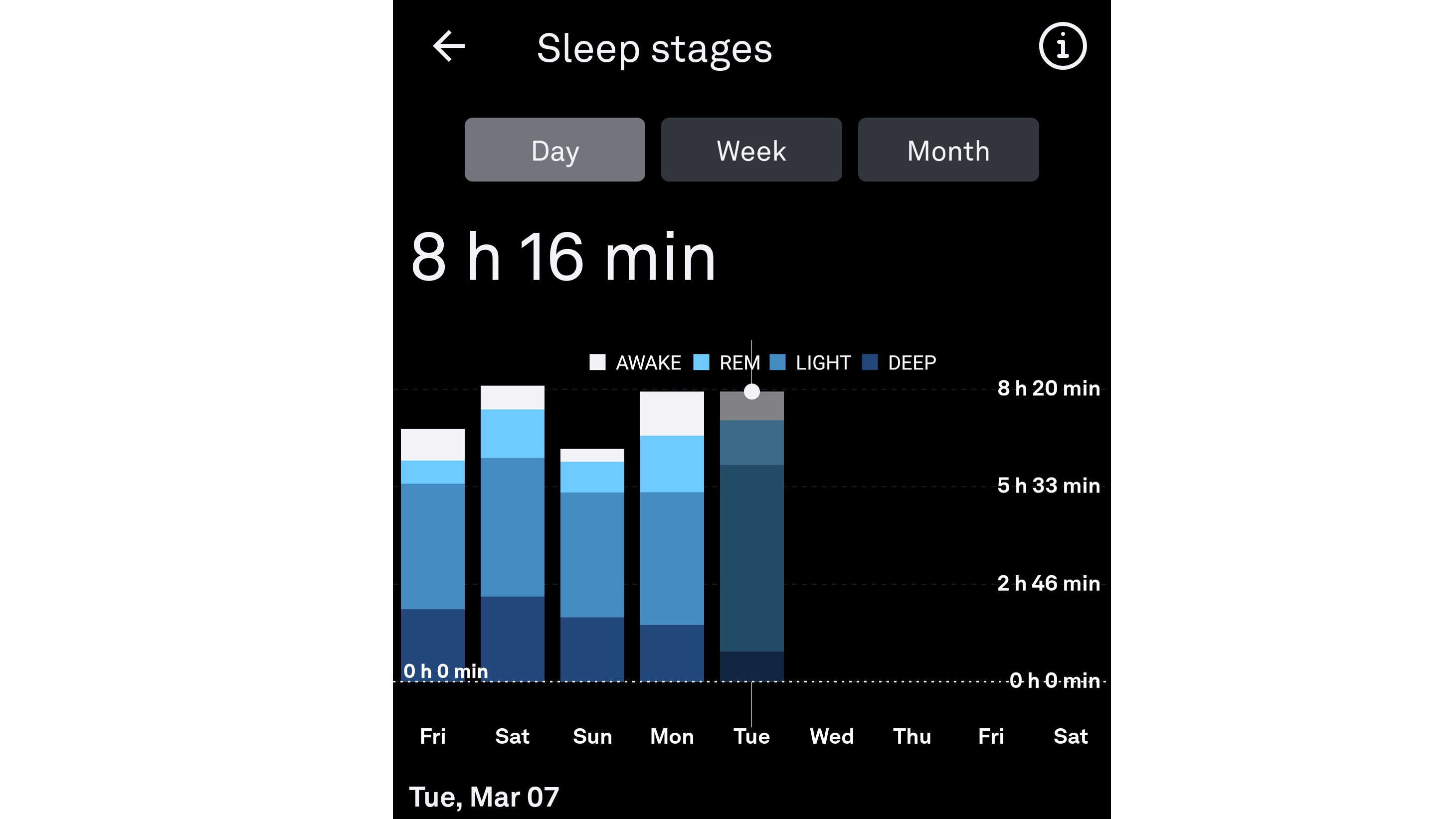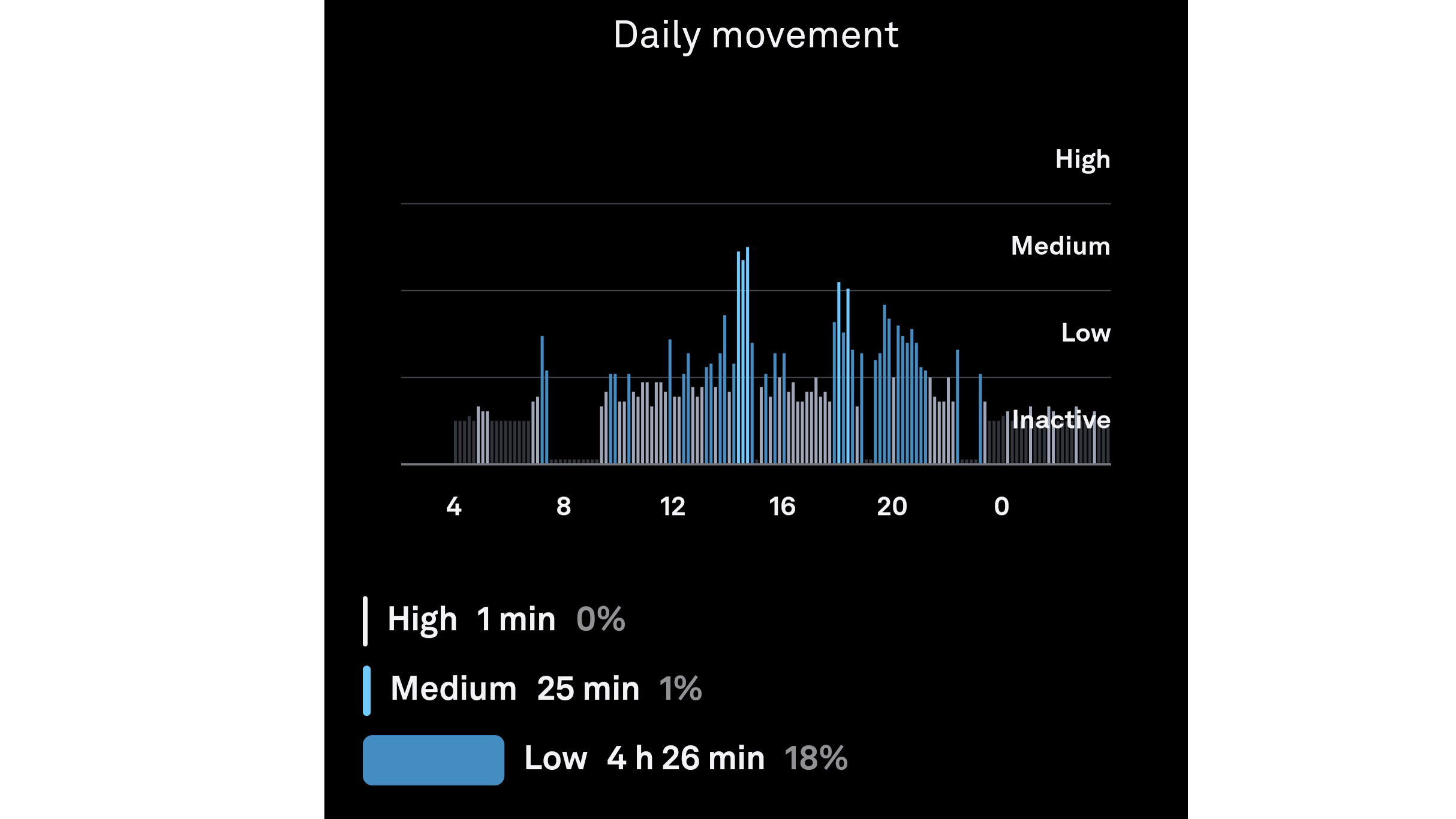I love the Oura ring, but it won't replace my Apple Watch... yet
I spent a week with the Oura ring, and these are its pros and cons

I’m a big fan of wearables, but I’ve always been an advocate of using tech responsibly. If you feel that getting notifications on your wrist about sleep, stress, heart rate, emails, and more will be anxiety-inducing for you, even the best smartwatch might not be the device for you.
Fortunately, a growing range of wearables designed to monitor your health in a less intrusive way, such as screenless and hybrid smartwatches like the Garmin Instinct Crossover, can provide you with health metrics without adding another screen to your life.
Smart rings also fall into this category. The Oura ring is by far the best known, although other tech companies, including Samsung, are throwing their hats into the, erm, ring. We rated the Oura ring highly in our review, but I hadn't had the chance to try if for myself until Oura kindly sent me one to test.
For the past week, I’ve been wearing the Oura ring while I’ve slept, worked, and exercised. While Oura representatives told me I need to wear it for around three weeks before I can get deeper insights and more helpful metrics from the ring, I am able to evaluate the ring in other areas.

Oura ring: Pros
The first thing to say is that the Oura it looks good. I tried the Stealth (black) version, but silver, gold, and other colors are available. It’s designed to be worn on the forefinger, and Oura sends you a package of plastic sizing rings before sending you the ring itself, so that you can ensure a good fit. The idea is that the ring shoud be comfortable enough to take on and off, but tight enough that it doesn’t easily spin. My fitted as intended, and the matte coating on the Stealth version gives it an onyx-style aesthetic. You’d never know it was a tracker.
Inside are several sensors, used to monitor heart rate and skin temperature for more accurate recovery measurements during the night and day. I really like wearing the Oura to track my sleep instead of the Apple Watch Ultra or Garmin Forerunner 955, which are my two go-to training watches. Both are quite chunky, and the Oura ring is a great ‘invisible’ tracker. I’m never bothered by it during the night.
Even at this early stage, its heart rate readings closely matched my watch’s heart rate measurements when I was on a run. If you complete a meditation session in the Oura app, the ring throws up heart rate variability scores and skin temperature changes for that session, just as it does when you sleep. It then adds that data into its recovery metrics.
Sign up for breaking news, reviews, opinion, top tech deals, and more.
The app provides a deep look at your data too, allowing you to scroll through graphs of your heart rate and activity levels, and tag them for your own records. It provides a vast range of tags from ‘anxiety’ and ‘back pain’ to ‘surgery’ and ‘tea’. Relaxing under a weighted blanket, and seeing your heart rate drop as a result? Add the ‘weighted blanket’ tag to that particular point on the graph. Had a few too many drinks the night before, and watching your heart rate spike the next day? Add the ‘hangover’ tag.
The aim of these tags is to help you interpret your data more effectively later on. Over time, the idea is that you’re able to take a look back over your health data like a journal, and tweak your habits to help you become a more relaxed, better rested, healthier person. I absolutely love this idea: it can be done with just a minute or two of reviewing your data each day, with no other screen time, on-device or otherwise, required.

Oura ring: Cons
I have some reservations, so far. For one thing, it’s the ring itself: at around 2.5mm thick, it doesn’t sound particularly obtrusive, but the recommendation to place it on the forefinger means I’m conscious of scratching it every time I go to open a door with a metal handle. It’s waterproof, but I’ll take it off when doing the washing up after dinner because I'm wary of scraping it on pots and pans, and it’s so small and light that I’ll often forget I’m not wearing it, and I'll leave it on the side of the sink.
Crucially, I’ll also take it off if I’m working out in the gym. Gripping a metal barbell, dumbbell, or pull-up bar will absolutely scratch or damage the ring, and by taking it off, you lose all activity information for your gym session. That’s fine – not many devices are fit to record weightlifting progress better than a Notes app anyway – but it could potentially skew your recovery and other health metrics.
It’s also not really able to replace the best Apple Watch or Garmin when it comes to any specialist running, cycling, or swimming metrics you may need: as a keen runner, I miss regular time, pace, distance, running power, and other information fed to me every kilometer. There’s also no GPS information on the Oura: all it can really do is add a workout tag to a block of time on your heart rate graph.
I’m a regular user of the Calm app, which I’ve paid an annual subscription for, and I need to add the ‘meditation’ tag into my graph manually if I don’t want to use Oura’s own guided meditation sessions. I haven’t really bothered so far: the increased relaxation (theoretically, anyway) is already incorporated into Oura’s recovery metrics, just without the ‘meditation’ label.

Oura ring: Early verdict
I like the idea of the Oura. I really, really do. I’ll even stick with it for a while, as I much prefer wearing a slender smart ring than a chunky watch at night, and the sleep and heart-health information I get from such a small device is excellent. There’s a reason it’s top of our best sleep trackers guide, and I think it strikes a really healthy balance between informative wellness tracking and allowing you to focus on the world around you compared to a smartwatch.
However, as a runner, I’m not getting enough information from the Oura to have it fully replace my smartwatch. As a lifter, I have to keep removing the ring, and as someone who uses mindfulness apps, I have to switch and do them in the Oura app for more accurate recording. Stay tuned for a more detailed assessment once I’ve worn the Oura for a few more weeks.

Matt is TechRadar's expert on all things fitness, wellness and wearable tech.
A former staffer at Men's Health, he holds a Master's Degree in journalism from Cardiff and has written for brands like Runner's World, Women's Health, Men's Fitness, LiveScience and Fit&Well on everything fitness tech, exercise, nutrition and mental wellbeing.
Matt's a keen runner, ex-kickboxer, not averse to the odd yoga flow, and insists everyone should stretch every morning. When he’s not training or writing about health and fitness, he can be found reading doorstop-thick fantasy books with lots of fictional maps in them.